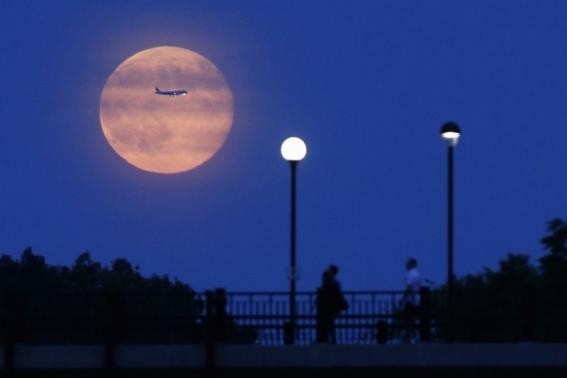From October to December 2016, Earth will witness a trifecta of extra-large full moons or Supermoons. The first spectacle has already passed and the last will occur December 13 (14 for other areas). But the last and the largest will happen in a few days or on November 14 and will not be seen again until 2034.
NASA dubbed the Nov 14 Supermoon as special as the perigee or the point in the moon's orbit when it is closest to Earth will become apparent in around two hours. The astronomical event will peak 8:52 AM EST and around that time Earth's natural satellite will superimpose by up to 14 percent and the brightness will increase by 30 percent, according to the U.S. space agency.
There are too many reasons not to miss the November Supermoon this year. For one, the generation that saw a full moon with the same jaw-dropping magnitude is mostly aging or gone. Records will show that the last time the same Supermoon lit the night sky was in 1948.
And those who will miss the extraordinary full moon two Mondays from now will have to wait another 18 years as scientists said that the same Supermoon will only happen again in November 25, 2034, a long wait indeed.
In the Northern Hemisphere, the November Supermoon is known as Beaver Moon, which according to Space.com is the signal for hunters to set traps before the waters turned to solid ice. "To ensure they had enough warm furs for the winter," the report said.
Prior to the Beaver Moon, farmers in the region also anticipate for the Harvest and Hunter's moons that respectively will shine in the dark nights of September and October. The events all point to the onset of winter that sets off preparation to brace for and ride out the biting cold to come.
NASA recommends stepping out on November 14 and again on December 14, and be awed by the majestic Supermoons. But when actual sky watching seems impossible there are alternatives that are readily available.
Starting on November 13 at 7PM EST or around midnight in GMT, the Slooh Community observatory will beam out its live broadcast of the biggest and brightest Supermoon in the last five decades, according to Space.com, adding that the same broadcast will be carried by its official site in real time.



























